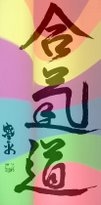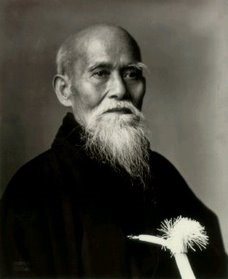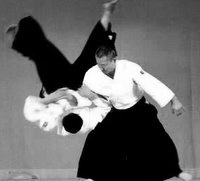About Aikido

AIKIDO (eye-key-doe) is a form of BUDO (martial art) in which the martial artist defends himself or herself from an attacker without attacking. Aikido was originated in Japan during the early twentieth century. Aikido has an emphasis on philosophical and spiritual development. Some other japanese martial arts are Judo, Sumo, Kendo, and Karate.

MORIHEI UESHIBA: The Founder of AIKIDO
1883-1969
THE AIKIDO UNIFORM

The uniform worn for practicing Aikido is an aikidogi. It is similar to the training uniform used in most modern martial arts. It consists of trousers and a wrap-around jacket, usually in white, fastened by a belt. Both trousers and jacket are thick; like those used to practice judo. Aikido tops are also available with shorter sleeves that extend just below the elbow.
Aikido practitioners (aikidokas) generally use only white and black belts to distinguish rank, but some use various belt colors. Testing requirements vary, so a particular rank in one school is not always comparable or interchangeable with the rank of another school.
Most Aikido schools add a pair of wide pleated black, brown, or dark blue trousers called a HAKAMA (Japanese Samurai pants.) Its use is mainly reserved for practitioners with black-belt ranks (DAN.)
Aikido practitioners (aikidokas) generally use only white and black belts to distinguish rank, but some use various belt colors. Testing requirements vary, so a particular rank in one school is not always comparable or interchangeable with the rank of another school.
Most Aikido schools add a pair of wide pleated black, brown, or dark blue trousers called a HAKAMA (Japanese Samurai pants.) Its use is mainly reserved for practitioners with black-belt ranks (DAN.)
